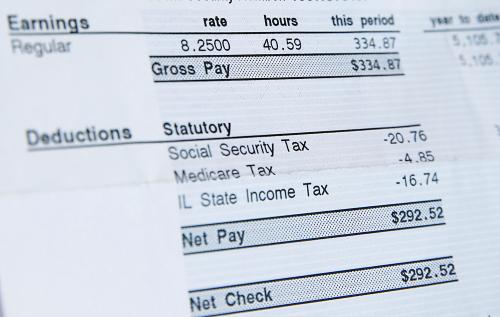As the 2018 midterm elections approach, there are renewed calls for increasing voter participation—especially of younger voters. However, voter turnout for U.S. midterm elections is notoriously low for all age groups, hovering between 36 to 40 percent for the voting eligible population. At 60 percent, turnout for presidential elections isn’t much better.
Though civic organizations and politicians try to improve voter turnout—via advertising, early voting, vote-by-mail programs, “get out the vote” campaigns and voter registration efforts—some of these programs have been shown to be ineffective and to even exacerbate participation gaps.[1]
So why don’t people vote, and how can we effectively get more people to the polls? In a new paper, my co-authors and I show that children who grow up in households that experience an increase in unearned income are more likely to vote as adults. This unearned income is a result of a governmental cash transfer program and we detail this in greater detail in the paper itself.
The paper builds off past research that suggests a strong relationship between parents’ voting behaviors and that of their children. If your parents didn’t vote, you don’t vote. Research also suggests that there is a strong relationship between household incomes (or wealth) and voting in the U.S.[2] Simply put, poverty presents obstacles to voting and the poor vote proportionately less frequently than their richer counterparts[3].
What’s surprising about our new research is that this relationship between parents’ and children’s voting behaviors is disrupted if household incomes are increased during adolescence. We find, in fact, that the children’s probability of ever voting rises to that of their initially wealthier counterparts. We document that there is a causal impact of increasing household incomes on the long-run voting behavior of children from those households.
Effects on voting are largest for children from the bottom half of the initial income distribution
Using data from publicly available voting records in North Carolina (Great Smoky Mountain Study of Youth), we match voters in presidential and midterm Congressional election years from 2002 onward to voters’ household incomes. In the first figure below we plot the difference in voting outcomes for the children that received the additional household income as compared to their untreated counterparts. We find that the children from the bottom half of the initial income distribution increase their voting by 10 to 20 percentage points as adults over a range of election years when compared to their counterparts; note that this increased likelihood of voting is on top of the baseline probability of ever voting of about 25 percent for this group. In the second figure below, we present the same comparison for children from households that received the cash transfers as well but were in households that were in the top half of the income distribution. The line in the figure hover around zero and indicates that there is no effect on voting for this population.
In results not shown here, we find that the relationship between children’s voting behavior in the future is closely linked to their parents’ prior voting behaviors. However, that relationship diminishes in size once the additional household income is considered. This means that the intergenerational transmission of voting behavior may be disrupted—at least for those in the bottom half of the income distribution—by an increase in household incomes.
No corresponding change exists for parents
In our study we can also test for whether the parents change their own voting behavior as a result of the increased household incomes. In the figure below, we present the differences in voting probability for the parents who receive the cash transfer as compared to their untreated counterparts over the pre-income increase period (prior to 1996) and the post-income increase period. The results indicate that there is no systematic impact on parental voting across these two groups.
The finding that household income affects the voting behavior of adolescents but not of adults suggests that voting behavior may be set quite early in life.
What can explain these results?
We have several potential explanations for our findings. First, with more resources during adolescence, children may be less likely to move or relocate during either childhood or adulthood. As a result, they invest more in their relationships and see a potential benefit to civic participation for a community that they care about. In other words, the increase in income may increase social capital. Second, the increase in household incomes seems to increase children’s educational attainment. Both an increase in social capital and human capital would predict an increase in voting probabilities.
What does this imply for the electorate?
These results suggest that anti-poverty or income augmentation programs should be viewed as important to the democratic functioning of a country, especially because our results imply that the effects of income on voting are long-lived—creating an increase in voter turnout that’s sustained over multiple elections.
By playing an important role in readying young people for their civic duties, programs aimed at boosting incomes and combatting poverty do more than provide direct health and family benefits. They may also play an important role in readying young people for civic duty—which is all the more reason to invest in them.
[1] Green, Donald P., Mary C. McGrath, and Peter M. Aronow. “Field experiments and the study of voter turnout.” Journal of Elections, Public Opinion & Parties 23, no. 1 (2013): 27-48
[2] Verba, Sidney, Kay Lehman Schlozman, and Henry E. Brady Voice and equality: Civic voluntarism in American politics. Harvard University Press, 1995
[3] See for instance, Ojeda, Christopher. “The Two Income-Participation Gaps.” American Journal of Political Science (Forthcoming)





Commentary
How do we get more young people to vote as adults? Cash transfers to their parents could help
July 5, 2018